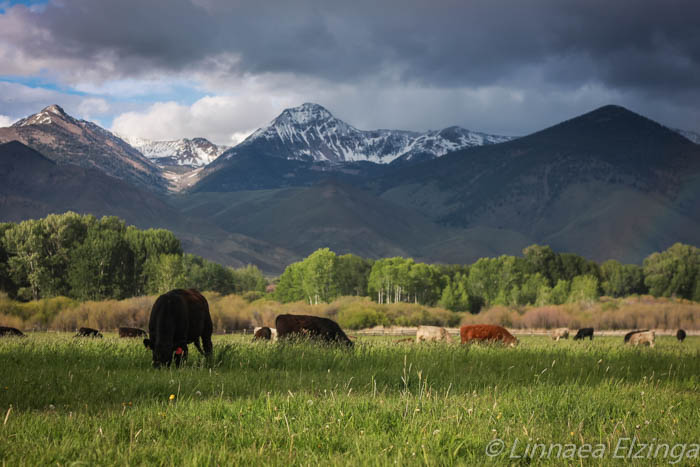Most cattle are feed non-therapeutic (not to treat disease) low-level antibiotics, often for several months to a year from weaning through the finishing stage. It is estimated that nontherapeutic livestock use accounts for 70 percent of total anti-microbial use (Union of Concerned Scientist …
Escherichia coli and Grassfed Beef
Escherichia coli (E. coli), is a ubiquitous bacteria in our environment, but a specific strain, 0157:H7, can cause serious human illness and even death. It has been estimated that 89% of ground beef patties in the United States contain E. coli 0157:H7 (USA Today 3/2/2000). Contamination by E. …
CLA Conjugated Linoleic Acid in Beef
Conjugated Linoleic Acid (CLA) Conjugated linoleic acid (CLA) is a nutrient found in the fat of ruminant animals that feed on green grass. Researchers are excited about CLA because it is anticarcinogenic at much lower dosages than are many other naturally occurring anticarcinogens. It …
Alderspring and BSE
BSE is a fatal disease that causes progressive neurological degeneration in cattle. Similar to BSE, Creutzfeldt-Jakob disease (CJD) is a rare disease that occurs in humans. In 1996, following outbreaks of BSE among British cattle, scientists found a possible link between BSE and a new variant of …
The Life of an Alderspring Organic Grassfed Beef
Life on Grass Finishing cattle on pasture requires careful management of grass. To produce succulent tender meat, animals must be gaining weight on lush, high-quality forage. The animals' grazing patterns must be carefully controlled and monitored or the grassland will be grazed too little or too …
Continue Reading about The Life of an Alderspring Organic Grassfed Beef




